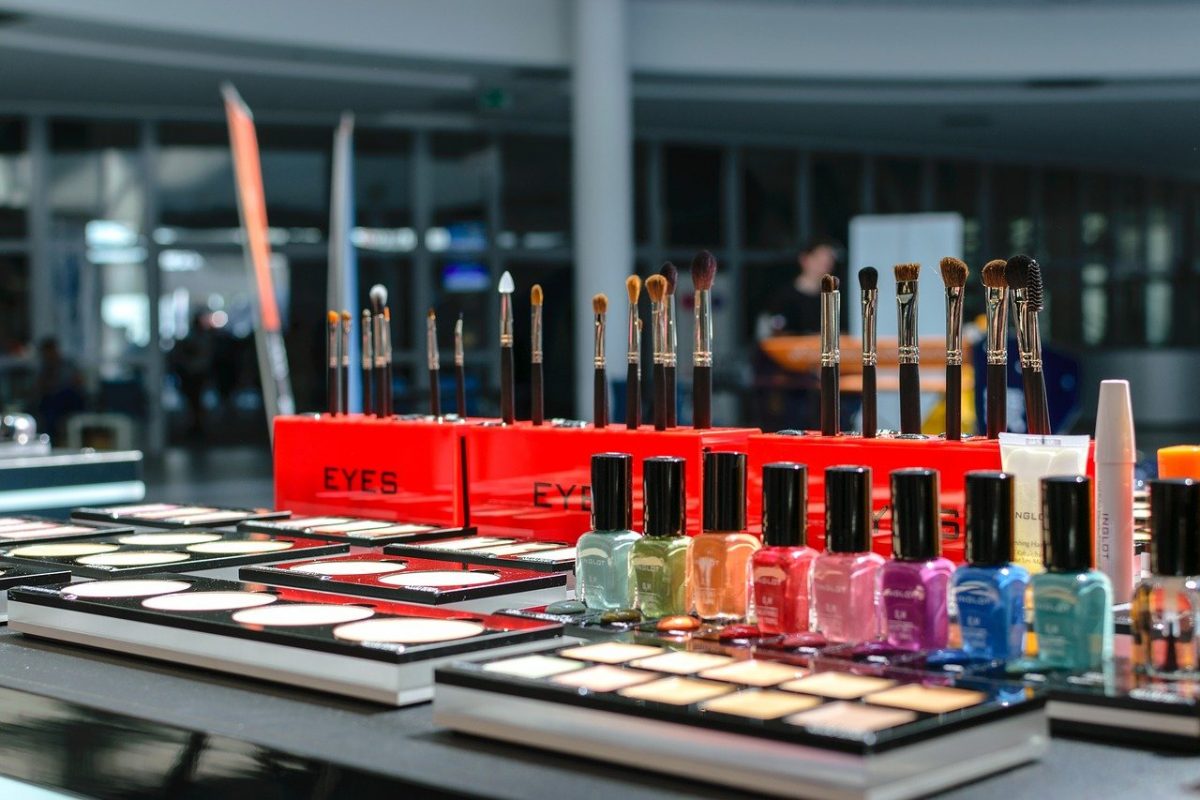By: Umang Chaturvedi
“Why are all the angels white?
Why ain’t there no black angels?”
-Muhammad Ali
Abstract
Sports have acted as a medium to connect people beyond language, ethnicity, culture and boundaries. In its pure sense, it is a satisfying activity at the micro-level and nothing less than a war at the macro level. The scale of competition increases with the hierarchy and so does the complexities. Some athletes and sportspersons are revered equivalent to Gods in their respective fraternity by the public. This respect is gained by them because of the magnanimity of sports. The business that goes behind the curtains has resulted in this magnanimity. But these Gods within the ambit of their magnanimity have not been untouched to the social issues which normally go unnoticed. Issues like racism in sports are not done yet from the world let alone the sporting facility. This article elucidates the reasons of racism present in professional sports with an attempt to define the core and genesis of the problem.
Learn more about International Sports Law with Enhelion’s Online Law firm certified course by Krida Legal!
The author explains the legislations/law which helps to counter this problem at global level. Additionally, the author has tried to provide an analysis through the cases of international performers who were subjected to racism in their careers. Certainly, the issue of disparity on the basis of colour begins within the nations. The problems are much more than racism being a ground of discrimination. In a country like India the issues even extend to discrimination on the basis of caste, sub-caste, race, gender, sex, etc.
- Introduction
Racism is defined as “a belief that race is the primary determinant of human traits and capacities and that racial differences produce an inherent superiority of a particular race”[1] by the Merriam Webster dictionary. Senseless killings and instances of Eric Garner (2014), AhmaudArbery (February 2020), Breonna Taylor (March, 2020) and George Flyod (May 2020) have witnessed sports community coming together to support the right cause irrespective of differences. Such issues force athletes to speak effectively as they do not want to go unheard for the social cause. LeBron James, Stephen Curry, James Harden, etc. are some of the most vocal NBA players after the recent incidents occurred. Other figures from different sports that have been vocal are Lewis Hamilton, Colin Kaepernick etc. They have supported the cause too.
The problem has not been untouched to the fraternity of sports. Rather it is more rampant. Any act within the territorial boundary of a competitive sport can be disguised as an act in the heat of the momentby the offender. Calm and composure are expected the most out of an athlete and sportsperson. These acts from the coolpeople then cannot be covered under the garb of competition or heat of the moment.
Learn more about International Sports Law with Enhelion’s Online Law firm certified course by Krida Legal!
- Core Problem
With cricket being popular as the game of gentlemen, it upsets the fraternity when conflicting views are shared by somebody belonging to the game itself. In late June 2020, West Indies cricket team’s captain Jason Holder said, “it is time for the entire cricketing fraternity to treat racism as seriously as match-fixing or doping and to hand tougher bans on racial offenders.”[2] Such statements point fingers at the authorities and the incapability of sport-specific laws which need to get stricter.
The core of the problem is the chauvinism that a superior country’s men carry with them. Such stereotypes are broken easily when a deprived and dominated wins or creates his/her space in the sport bare minimum. In context, 2013’s Chadwick Boseman starrer sports-drama film, “42”[3] came in light. It highlighted the efforts of an African-American Major League Professional player Jackie Robinson who was subjected to racism in a then all-white baseball league by fellow players and fans. His jersey number was later retired in respect, on which the film’s name was based.To draw a parallel from the same, the core of the issue lies within the people of the sporting fraternity. Everybody associated with it especially the fans.
Learn more about International Sports Law with Enhelion’s Online Law firm certified course by Krida Legal!
- Laws, legislations and efforts
Issues raised through acts done by black athletes are certainly to bring into light the adversities they’ve faced over the course of history. These issues are political in nature which overlaps with sports. This overlap has its own interpretation where some define it to be right and other define it to be wrong. “Dissent in sports is usually understood as expressing dissatisfaction against an umpire’s decision. However, in the present context, dissent must be understood as a conscientious protest against a larger problem that has socio-political undertones.”[4] In this sub-heading, the author has tried to analyze various measure and steps taken by the way of local laws of different jurisdictions. The examples considered for study include and are categorized into Australian laws, European laws and initiatives, Conventions of United Nations, laws of USA and Indian laws.
- Australia
The provisions of the International Convention on the Elimination of All Forms of Racial Discrimination (“ICERD”)[5] are incorporated under Australian Law through its Racial Discriminations Act of 1975. It is a general legislation extending to sports and related organizations. Australian Football League (AFL) guidelines are strict regarding racism since the introduction of Rule 30 in 1995. Rule 30 is used to tackle racism and religious vilification. Even the laws of Australia are stringent regarding racism in general through Racial Discrimination Act, 1975 and Racial Hatred Act, 1995[6].
In 2008, Indian spinner (cricketer) Harbhajan Singh was penalized for allegedly expressing racial views on an Australian cricketer Andrew Symonds when the former called him ‘monkey’ during a test match in Australia. This embarrassing event was a confusing one. It was deliberated if the act was racial or not because the remark clearly did not qualify for the alleged violation but it was still derogatory. Eventually Justice John Hansen of Australian Appeal Court absolved the cricketer of liability and cleared the charges. What adds to the problem is that a spectator cannot be banned or fined for comments because that is the major revenue generation source for clubs. Australian local football has seen various instances where boys aged 12-14 who come from other countries to make their career face racism at a vulnerable stage.[7]
Learn more about International Sports Law with Enhelion’s Online Law firm certified course by Krida Legal!
- Europe
Europe has been the center stage for football with record breaking viewership every year. Multiple local leagues are supported due to interest and large fan base. As a cherry on the top, UEFA Europa League and UEFA Champions League have dominated global football in all terms. There are multiple organizations and legislations which help in tackling the problem in Europe. FARE (Football Against Racism in Europe) Network is one such organization which has received backing from governing bodies like UEFA, FIFA and European Commission for the common objective of eradicating the social issue. Headquartered in London, it was set up in the year 1999 at Vienna (Austria). It gained relevance in the contemporary scenario when it began to work as a network of enthusiasts, players, associations, etc. as members to stand strong against the discrimination.
A similar initiative as a 3 day campaign was launched in 2006 by the Romanian Football Federation in association with National Council for Combating Discrimination (a society-institute based in Romania). It was named Racism Breaks the Game which was organized to combat discrimination against the Romani minority and to promote fair play in football. Even UEFA DR Article 14[8] prohibits racism of any form and prescribes ways to tackle it through guidelines. Article 165 of Treaty on the Functioning of the European Union (TFEU) also acts in the same regard. It deals with all such issues arising out of sports. Lisbon Treaty though allows the Union for minimal interference but acts strictly through courts for cases arising out of racism.
Learn more about International Sports Law with Enhelion’s Online Law firm certified course by Krida Legal!
- United Nations and United States of America (USA)
United Nations has time and again used sports as a mode to end racism at global level. It was reiterated by then Secretary-General Ban Ki-moon that, “Sport is a universal activity that can reaffirm our fundamental human rights.”[9]He urged to “use the power of sport to end the blight of racism” as it marked the annual International Day for the Elimination of Racial Discrimination in 2013.Additionally, The Durban Programme of Action 2001 in paragraph 128, 129 and 218 urges international and national sports bodies to tackle racism effectively. Inter-American Convention against Racism, Racial Discrimination and Related Forms of Intolerance, 2013[10] is another internationally signed document.
In USA, the Patsy Mink Equal Opportunity in Education Federal Act, 1972 complements the Civil Rights Act, 1964 “in the area of public education and federally assisted programmes (enacted to end discrimination in various fields)”[11]. The legislation has ensured equal access to sports for all active programmes that receive federal funding in USA[12]. Even after attaining peak of success in sports, public and spectators disregard such facts and direct racist comments in NBA, Pro Baseball and NFL. In early 2019 Oklahoma’s basketball star Russell Westbrook faced racist remarks in an away game at Utah.
- India
India is a home to multiple sports and professional leagues like IPL, ISL, IHL, Pro-Kabaddi etc. The country is more special due to its diversity. Additionally the essence of regional representation varies. There are sub-divisions and regions within regions. Even a whole north-east is described into 7 sisters further. South, in itself is divided in historical kingdoms now states. This division is interesting but when people from different backgrounds face each other in state/national camps, there are conflicts of opinions, likes, dislikes which might be detrimental in the longer run for a team representing at the international level.
The best example can be drawn from 2007’s Indian film Chak De! India. Shah Rukh Khan embodied the role of hockey coach Maharaj Krishan Kaushik mixed with the background of Indian player Mir Ranjan Negi. The film was based on a real story where Indian Women’s Hockey Team won 2002 Commonwealth Games. It showed the reality of internal conflicts (due to colour, region, state, racial and religious bigotry[13] etc.) between players during the camp.
Learn more about International Sports Law with Enhelion’s Online Law firm certified course by Krida Legal!
India introduced the Anti-Discrimination and Equality Bill 2016 (ADE Bill) in the Lok Sabha to tackle any form of discrimination. Other than broad discussions under Article 14, 15, 16 of the Constitution of India, federations are entrusted with the duty to handle all issues relating to sports. Additionally, Section 153A of the Indian Penal Code, 1860 deals with the punitive measure related to racist acts or comments.
- Conclusion – Solution and Criticism
In all, the issue of racism has proven to be detrimental to the development of some athletes but there are many amazingly great sportspersons who have defeated all odds and reached the top in their respective sports. The problem is deep rooted in the social system which comprises of humans, which is a much broader aspect than society. It includes athletes, sportspersons and all other people related to the fraternity of sports in one way or other. To eradicate the issue of racism from sports, the primary need is to make people realise that there are no differences in reality, they are essentially in the mind of individuals and their beliefs, which is prima facie incorrect.
Learn more about International Sports Law with Enhelion’s Online Law firm certified course by Krida Legal!
Until the mentality of important organizations like IOC does not change, no substantial change can be found. The controversial Rule 50 of the Olympic Charter prohibits any “kind of demonstration or political, religious or racial propaganda…in any Olympic sites, venues or other areas”. It was clarified by the authorities in January 2020 in preparation of scheduled Olympics that any gesture or kneeling (like past incidents of Gwen Berry’s fist on podium and Colin Kaepernick’s kneeling) will not be entertained at the events.
Until IOC resolves issues like these where the anti-racist demonstration are looked at from a perspective of political overlap, there won’t be a solution. The international sports guidelines in context with racism are soft but strict. Still there is a requirement for spectators, fellow players and organizations to be careful specifically around the young representatives of respective sports. A negative impression is made for a second inside the court/field which stays and impacts a vulnerable young player for his whole life. Sports should be used as a medium for the primary purpose of leisure and shall only be associated with the efforts, hard-work, dedication and sweet success involved.
[1]Racism, Merriam-Webster Dictionary (Jan. 23, 2009).
[2]Sportstar, Jason Holder: Racism Should be Treated as Seriously as Match-Fixing and Doping, (June 28, 2020), https://sportstar.thehindu.com/cricket/england-vs-west-indies-racism-sammy-jason-holder-gayle-icc-ipl/article31 937748.ece.
[3]History.com, Jackie Robinson Breaks Color Barrier, (April 13, 2020), https://www.history.com/this-day-in-history/jackie-robinson-breaks-colorbarrier#:~:text=On%20April%2015%2C%201947%2C%20Jackie,for%20more% 20than%2050%20years.
[4]Shivam Singh, When Sports Align With Dissent, The Indian Express, (June 26, 2020), https://indianexpress.com/article/opinion/black-lives-matter-when-sports-aligns-with-dissent-6477907/.
[5]Australian Human Rights and Equal Opportunity Commission, What’s the Score?A Survey of Cultural Diversity and Racism in Australian Sport, (2006), p. 8, https://www.humanrights.gov.au/publications/whats-score.
[6]Id.
[7]Sophie Kesteven, Kids are Being Subjected to Racist Abuse at Junior Sports Games, ABC Radio National, (Nov 1, 2019), https://www.abc.net.au/news/2019-11-01/racism-in-junior-sport-australia-talks/11636174.
[8]UEFA Disciplinary Regulation, 2019 Edition, https://editorial.uefa.com/resources/0257-0ddf58550d23-3b55809 3983e-1000/disciplinary_regs.pdf.
[9]UN News, No Place for Racism in Sports, UN Declares on International Day, (March 21, 2013), https://news.un.org/en/story/2013/03/435072-no-place-racism-sports-un-declares-international-day.
[10]Organisation of American States, Inter-American Convention Against Racism, Racial Discrimination an Related Forms of Intolerance, http://www.oas.org/en/sla/dil/inter_american_treaties_A-68_racism.asp.
[11]ACLU, Gender Equity in Education, https://www.aclu.org/title-ix-gender-equity-education.
[12]U.N. GAOR, 69th Sess., A/69/340, Combating Racism, Racial Discrimination, Xenophobia and related intolerance, (Aug. 22, 2014), https://www.ohchr.org/Documents/Issues/Racism/A-69-340.pdf.
[13]Jaspreet Pandohar, Chak De India! BBC, (August 1, 2007), http://www.bbc.co.uk/films/2007/08/06/chak_ de_india_2007_review.shtml.
Learn more about International Sports Law with Enhelion’s Online Law firm certified course by Krida Legal!


